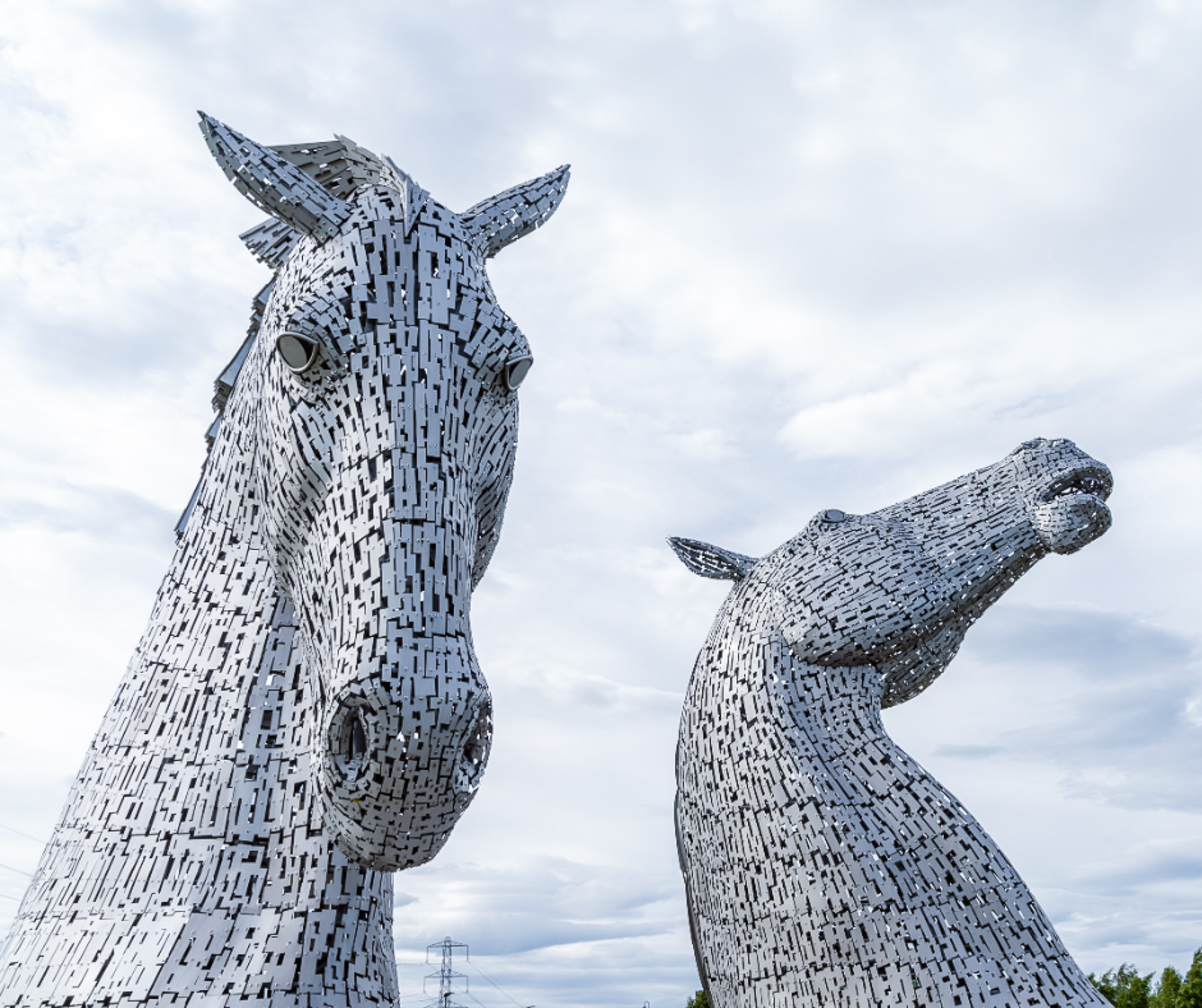Our 2024 Solo Female Travel survey revealed that the United Kingdom (UK) is one of the best destinations for solo female travelers TWO years in a row!
With over 3 million visitors to Scotland annually, we aren’t the only ones who can’t wait to enjoy the majestic landscapes of the Highlands, Edinburgh’s charming streets and the warm Scottish hospitality.
But there are a few things you need to know before visiting Scotland and this article covers all the essential travel information, especially if you are traveling solo or joining our Scotland group trips for women.
Looking for what to pack? You can find our Scotland packing list here.
Brief history of Scotland
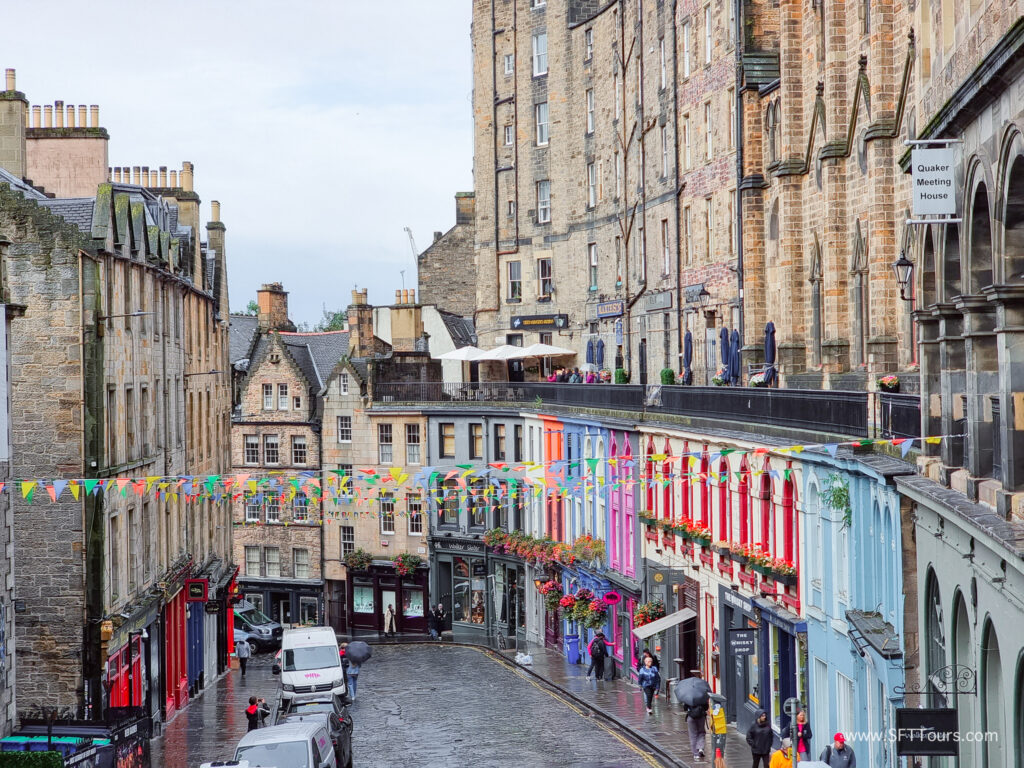
Before we get started, it’s useful and important to learn a bit more about this British region’s history and status in the Union. If you’d rather go straight to the Travel tips for Scotland, click here.
Ancient Scotland (Prehistoric times to around 843 AD)
Scotland’s ancient history is steeped in mystery and legend. From the early settlers who roamed its rugged landscapes over 10,000 years ago to the enigmatic Picts, known for their intricate stone carvings, Scotland’s early inhabitants left a lasting imprint on its history.
The arrival of the Gaels, with their distinctive Celtic culture and language, further shaped the landscape and laid the foundations for the kingdom that would emerge.
Medieval Scotland (843 AD to the late 15th century)
The medieval period in Scotland was marked by a tapestry of conflicts, alliances, and cultural exchange.
The Roman Empire made its presence felt but never fully subdued the northern territories. Meanwhile, figures like Saint Columba brought Christianity to Scotland, establishing influential monastic communities such as the one at Iona.
The Norse invasions added another layer of complexity, leaving their mark on the northern and western coasts.
The Wars of Independence (1296-1357)
The Wars of Independence between Scotland and England, notably spearheaded by figures like William Wallace and Robert the Bruce, featured in Braveheart, were pivotal moments in Scottish history.
The Battle of Bannockburn in 1314 stands as a symbol of Scotland’s resilience and determination to resist English domination, ultimately leading to the recognition of Scottish sovereignty.
The Renaissance and Reformation (15th century to 17th century)
The Renaissance in Scotland, from the late 15th to early 17th centuries, was a period of cultural revival influenced by European Renaissance ideals. It saw a flourishing of literature, art, and learning, with figures like Gavin Douglas and Hector Boece contributing significantly.
Despite political unrest, including the Reformation and the Protestant-Catholic conflicts, it left a lasting impact on Scottish culture and intellectual development.
Union with England (1707)
The Act of Union, passed in 1707, united the Kingdom of England and the Kingdom of Scotland into a single sovereign state, the Kingdom of Great Britain, by dissolving their separate parliaments and establishing a unified Parliament based in Westminster.
The act brought economic benefits and political stability to Scotland, albeit with ongoing debates over national identity and autonomy that continue till today.
Highland Clans (15th to 18th centuries)
Central to Scotland’s medieval and early modern history are the Highland clans, tight-knit kinship groups that dominated the region’s social and political landscape.
Each clan was led by a chief and bound together by shared ancestry, territory, and allegiance. These clans played a significant role in Scottish society, providing protection, governance, and a sense of identity to their members.
Some of the most renowned Highland clans include the MacGregors, Campbells, MacDonalds, and MacLeods, each with its own rich history and traditions.
The MacGregors, for example, were fierce warriors known for their loyalty and resilience, while the Campbells rose to prominence as powerful landowners and political players.
The MacDonalds, with their vast territories in the Western Isles, held considerable influence, while the MacLeods were renowned for their seafaring prowess and strategic alliances.
The Fall of the Highland Clans (Late 18th to early 19th centuries)
The decline of the Highland clans began in the aftermath of the Jacobite uprisings of the 18th century, who were supporters of the exiled Stuart dynasty’s claim to the thrones of England, Scotland, and Ireland.
The Jacobite cause, aiming to restore the Stuarts to the throne, gained significant support in Scotland, particularly among Highland clans and Catholic communities. The cause ultimately failed, leading to severe repercussions for Scottish society, including the suppression of Highland culture and the dismantling of traditional clan structures after the defeat at Culloden in 1746.
Despite these challenges, the legacy of the Highland clans endures, celebrated in literature, music, and festivals.
Today, many clans maintain active societies and associations, preserving their heritage and fostering connections among descendants scattered around the world.
Industrial Revolution and Modern Scotland (18th to mid-19th century)
The Industrial Revolution started in the late 18th century and transformed Scotland’s economy and society, particularly in urban centers like Glasgow, which became synonymous with shipbuilding and heavy industry.
However, this period also saw the displacement of rural communities during the Highland Clearances (forced evictions), highlighting the social and economic disparities of the time.
20th Century and Beyond (1900s)
In the 20th century, Scotland weathered two world wars and underwent significant social and political change.
The rise of Scottish nationalism led to the establishment of a devolved Scottish Parliament in 1999, granting Scotland greater autonomy within the United Kingdom.
Debates over independence continue to shape Scottish politics, reflecting the enduring quest for self-determination and identity.
Quick facts about Scotland
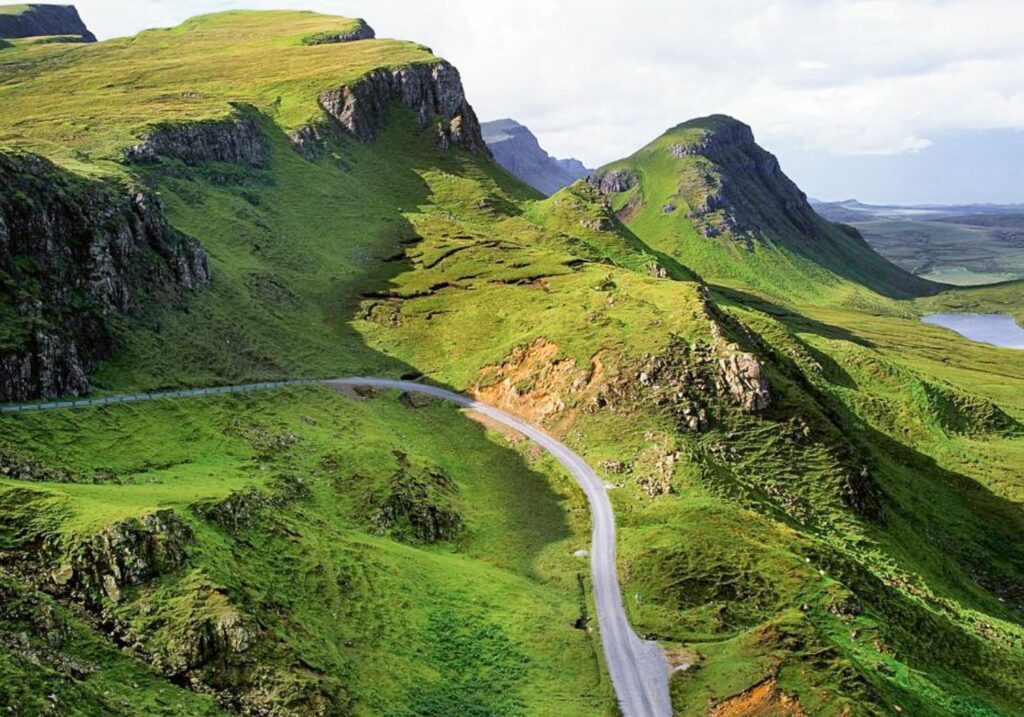
Scotland is a very unique destination and because of that, you’ll find many quirks and peculiarities that make for interesting facts.
- The capital of Scotland is Edinburgh, even though Glasgow is larger. The city is famous for its historic and cultural landmarks, including Edinburgh Castle and the annual Edinburgh Fringe Festival.
- Scotland’s national animal is the unicorn, which is depicted on the royal coat of arms. You will find many unicorns on flags, blankets and other decorative items at Stirling Castle.
- The official language is English, but Scots Gaelic is also spoken in some regions, particularly in the Highlands and Islands. Even if you speak English fluently, the Scottish accent is very hard to understand for foreigners, don’t be sorry to ask for words or sentences to be repeated if you didn’t catch them.
- There are over 790 islands in Scotland with 95 of them being uninhabited. The most popular islands include the Isle of Skye, Isle of Mull, Isle of Arran, Orkney Islands, Shetland Islands, and Isle of Lewis and Harris.
- Scotland has more than 30,000 freshwater lakes, which are called lochs in Scotland, ranging all the way from small “lochans” to the world renowned lochs of Loch Ness and Loch Lomond.
- The country is famous for its whisky production, having the highest concentration of whisky distillation in the world at over 140 malt and grain distilleries. 41 bottles of whisky are shipped around the world every second!
- Scotland is home to many iconic symbols, such as tartan patterns. There are over 7,000 unique tartans on record.
- Bagpipes became a symbol of national pride and identity after it replaced the traditional trumpet to inspire Highlanders at the Battle of Pinkie in 1549.
- The Loch Ness Monster, known affectionately as “Nessie,” (Twilight fans, if you know you know) is a mythical creature believed by some to live in the waters of Loch Ness in the Scottish Highlands.
- Scotland is widely regarded as the birthplace of golf. The oldest recorded game of golf was played at the Old Course at St Andrews in 1552, making it one of the oldest golf courses in the world.
- There used to be over 3,000 castles in Scotland, serving as defensive structures, symbols of power, and social centers, embodying the nation’s dynamic history of warfare and power dynamics. Now you can explore some of the most popular castles like Edinburgh Castle, Stirling Castle, Eilean Donan Castle, Dunnottar Castle, and Glamis Castle.
- There are more sheep in Scotland than people! With a population of 5.4 million people, Scotland is home to over 6.83 million sheep.
- Highland cow’s horns can grow as long as 3-4ft from tip to tip, and they aren’t just decorative – these long horns can help them to forage through the Highland snow to get to the coarse grass beneath.
Scotland travel tips
In this section we want to share general Scotland travel tips to help you plan your trip.
When to visit
The best time to visit Scotland depends on your preferences for weather, activities, and crowd levels. Here’s a breakdown of the different seasons:
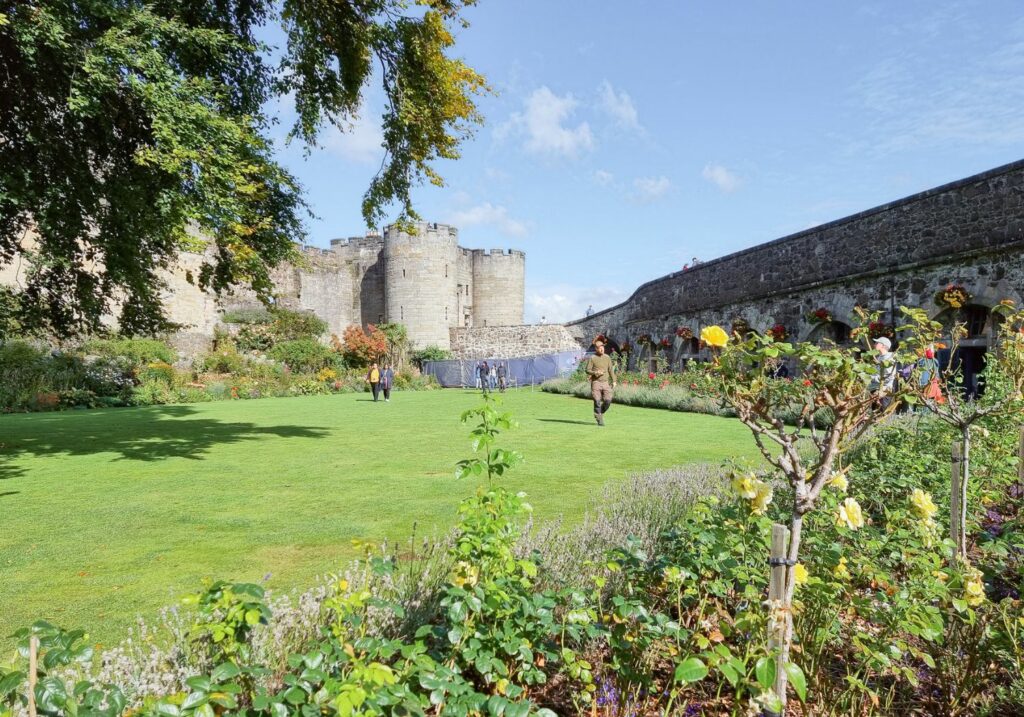
Summer (June to August)
This is the peak tourist season in Scotland. The weather is relatively mild, though rarely hot, with longer daylight hours and less rain, making it ideal for outdoor activities like hiking, sightseeing, and exploring the countryside.
However, it can also be the busiest and most expensive time to visit, especially in popular tourist destinations like Edinburgh and the Highlands or around famous events:
- Edinburgh Fringe Festival: The Edinburgh Fringe Festival, the world’s largest arts festival, takes place every August, bringing thousands of performers and millions of visitors to the city for a diverse array of theater, comedy, music, and more.
- Highland Games: Summer is the prime season for Highland Games throughout Scotland, offering visitors a chance to experience traditional Scottish sports, music, and cultural activities against the backdrop of scenic Highland landscapes.
- Music festivals: Scotland hosts numerous music festivals during the summer months, including TRNSMT in Glasgow, Celtic Connections, and the Hebridean Celtic Festival, showcasing a wide range of musical genres from traditional Scottish folk to contemporary rock and pop.
Pro tip: Late spring through early autumn (especially during July and August) is midge season in Scotland. These tiny insects congregate in stagnant water with no wind in the Highlands and while not dangerous, they are a real annoyance. Arm yourself with repellent with picaridin like this one, and consider dressing in long sleeves and pants. Stay updated on midge forecasts to tweak your plans as needed.
For more in-depth information about the weather in different parts of Scotland during summer and how to dress for it, take a look at our Scotland packing list for women.
Spring (March to May) and Autumn (September to October)
These shoulder seasons offer a good balance of milder weather, fewer crowds, and the beauty of changing landscapes.
Spring brings blooming flowers and vibrant greenery, while autumn showcases stunning foliage as the leaves change color, especially in the Highlands. It’s a great time for outdoor activities like hiking, wildlife spotting, and touring historic sites.
Scotland’s landscapes transform into stunning displays of autumn colors during this season, making it an ideal time for hiking, nature walks, and photography, particularly in scenic areas such as the Trossachs National Park and the Cairngorms.
There are also some interesting events taking place in the spring and autumn:
- Tulip festivals: Many gardens and parks in Scotland, such as the Royal Botanic Garden Edinburgh, host tulip festivals during springtime when the flowers are in full bloom, attracting locals and tourists alike to enjoy the vibrant displays.
- Whisky festivals: The Spirit of Speyside Whisky Festival and the Islay Festival of Music and Malt, bring enthusiasts to sample Scotch whiskies, learn about the distillation process, and enjoy live entertainment.
- Scottish Food and Drink Festivals: Autumn in Scotland sees a celebration of the country’s rich culinary heritage with events like the Scottish Food and Drink Fortnight, where visitors can indulge in tastings, workshops, and demonstrations showcasing the best of Scottish cuisine and beverages.
- Halloween Celebrations: Scotland has a long history of celebrating Halloween, with events like the Samhuinn Fire Festival in Edinburgh, where participants engage in immersive performances inspired by Celtic traditions, folklore, and mythology.
Winter in Scotland
Scotland’s winters are very cold and wet, with very short daylight hours and snowfall, especially in the Highlands.
But this time of year also offers a unique charm, with festive celebrations like Edinburgh’s cozy Christmas market nestled right in between Princes Street and the gardens, cozy pubs, skiing and the possibility of seeing the Northern Lights in the far north.
Scotland is famous for its Hogmanay celebrations, particularly in Edinburgh where festivities include street parties, concerts, and the iconic midnight fireworks display over Edinburgh Castle to welcome the New Year.
Public Holidays
On public holidays, many businesses, shops, museums, and tourist attractions may be closed or have limited opening hours. Check in advance and plan accordingly, especially if you have specific sights or activities you want to experience.
Public transport services, including buses, trains, and ferries, may operate on reduced schedules on public holidays, and book your accommodation well in advance to secure your preferred options. Below are the public holidays of Scotland:
- January 1st: New Year’s Day
- January 2nd (Scotland): 2nd January
- Good Friday: Friday before Easter Sunday
- Easter Monday: Monday following Easter Sunday
- The first Monday in May: Early May Bank Holiday
- The last Monday in May: Spring Bank Holiday
- The last Monday in August: Summer Bank Holiday
- November 30th (Scotland): St. Andrew’s Day – Scotland’s patron saint
- December 25th: Christmas Day
- December 26th: Boxing Day
- December 31st: New Year’s Eve (Hogmanay in Scotland)
Passport and visa requirements
Scotland is part of the United Kingdom (UK), so the passport and visa requirements for visiting Scotland are the same as for visiting the UK as a whole. Here’s a general overview:
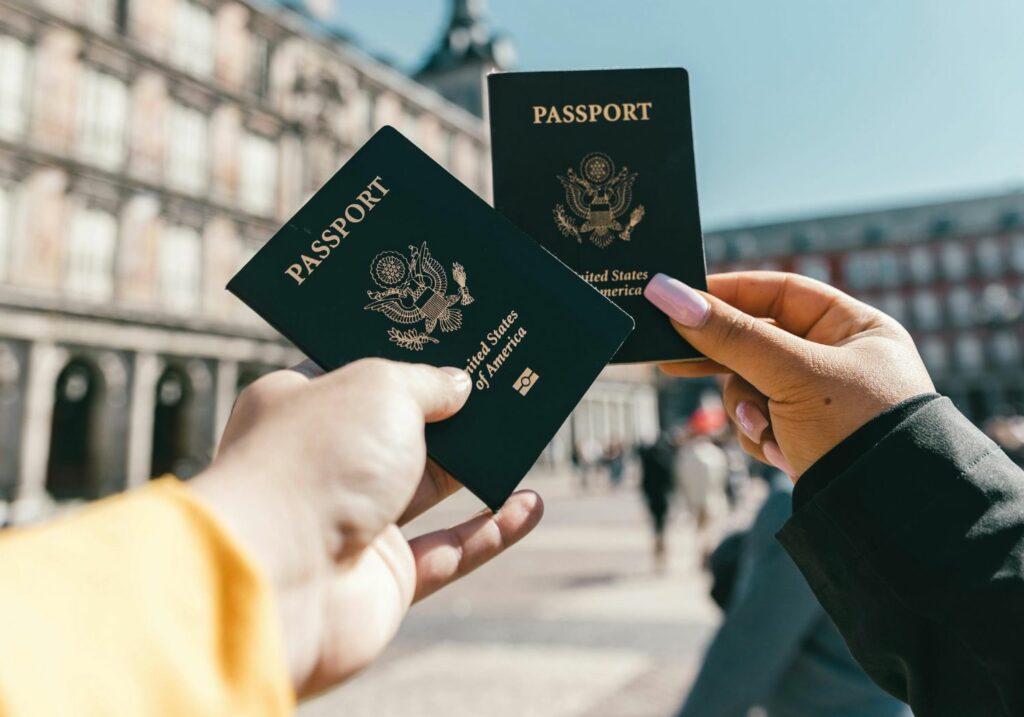
Most visitors to the UK only need a passport that is valid for the duration of their stay to enter the country, but Irish citizens may continue to use their national ID card.
Whether you need a visa will depend on your nationality, the purpose of your visit, and how long you plan to stay.
Most visitors from Europe, the US, Canada, Australia and New Zealand do not need a visa for short tourism visits, while citizens of the Middle East may need to apply for a travel authorization in advance. Your passport must have at least 1 page blank if you plan to use it to apply for a visa. To confirm your requirements, check the official Government website here.
Health and safety
Nobody wants to get sick when on vacation but, if the worst is to happen, it pays to be prepared.
Bring all the medication you’ll need: During your trip to Scotland you will typically never be too far from an urban center, a doctor, a hospital and a pharmacy, but it is still strongly recommended to bring any prescription medication you may need and enough of it to last you the entire trip.
Your specific medication may not exist in Scotland, or it may require a prescription you need to see a doctor for, so save yourself time and hassle by bringing everything you may need with you. Review what you should bring in your first aid kit here.
IMPORTANT: Some prescribed and over-the-counter medicines available in your country might be considered controlled substances in the UK. A doctor’s prescription is required in all cases, which should mention your details, the types of medicine and the condition treated. More details here.
Get that coverage: We never leave the house without purchasing extensive medical and travel insurance coverage and this is why we make it mandatory to join our tours. You should make sure that you have adequate medical insurance to cover any unforeseen medical expenses.
Unexpected accidents do happen, and if you needed to be evacuated back home with an injury, the medical bill could bankrupt you.
The best travel insurance will differ for each traveler, depending on the nature, style, and length of your trip, so we recommend using an aggregator and comparison tool such as Travel Insurance Masters to find the right one for you depending on what coverage you want, age, location, trip, etc.
In case of emergency: In the UK, including Scotland, the emergency services can be contacted by dialing 999 or 112 from Scotland, both numbers are free. This number is used for reporting emergencies such as accidents, crimes, or situations requiring immediate assistance from the police, fire brigade, ambulance service, or coastguard.
Tap water: Tap water in Scotland is generally safe to drink and closely monitored and regulated by the Drinking Water Quality Regulator for Scotland (DWQR) to ensure that it meets strict health and safety standards.
Passport copies: All hotels and accommodation providers are required by law to register you with the local authorities and for that, they need to take a picture of your passport so don’t be alarmed if they do.
Safety in Scotland for solo female travelers
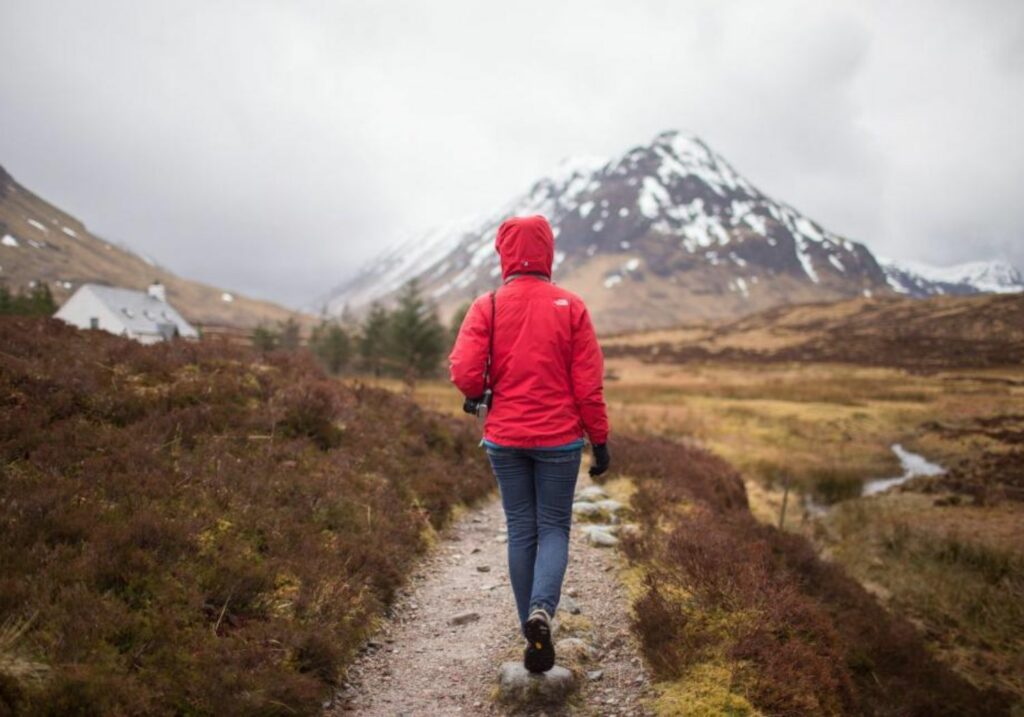
Scotland is considered one of the safest destinations in Europe but there are areas where petty theft may occur more frequently, particularly in crowded tourist spots, public transportation hubs, and urban centers.
Always keep your valuables safe and your bag in the front and zipped. Slash and theft proof cross-body bags like the ones we listed on this article are a great idea, and in crowded areas, keep your arm on your bag’s zipper for extra protection.
If something is to happen to you, you will most likely not even notice, but look out for situations in which anyone is trying to distract you by trying to sell you something, talking to you or drawing your attention to anything while someone else steals your wallet or phone. Read our full article on safety tips here.
If you plan to go hiking alone, make sure you let someone know your plans, have plenty of water and snacks, dress appropriately for unexpected rain, wind or snow, and carry a personal locator beacon in case of emergency.
Want to know how to stay safe and prevent a negative experience or encounter on your travels? Check out EMPOWERFUL, a series of 35+ sessions, 40+ experts and over 50+ hours of learning via masterclasses, panel discussions, and inspiring interviews to empower YOU to travel solo!
Getting to Scotland
There are many ways to arrive in Scotland that take advantage of its connection to the rest of the UK and it’s island status.
By air: Most travelers will arrive in Scotland via air, through one of several international airports, including Edinburgh Airport, Glasgow Airport, Aberdeen Airport, and Inverness Airport.
By train: Scotland is also well-connected to the rest of the UK and the rest of Europe by train. You can travel to Scotland from cities like London, Manchester, and Newcastle using services operated by companies like LNER (London North Eastern Railway) and Avanti West Coast. From London, you can catch the Eurostar service to Paris, Brussels and Lille.
Pro tip: When taking the Eurostars, remember you’ll be crossing an international border and therefore need to go through security and passport control, allow yourself enough time for that.
By ferry: Ferries are another way to arrive in Scotland. Catch a ferry from Newcastle and Hull in England, Belfast and Larne in Northern Ireland, and Amsterdam in the Netherlands.
NOTE: Ferry schedules and routes may vary depending on the time of year and operator. It’s advisable to check ferry companies’ websites like Caledonian MacBrayne (CalMac) or contact them directly to confirm schedules, book tickets, and check for any travel restrictions or requirements. Additionally, consider booking your ferry tickets in advance, especially during peak travel periods, to secure the best fares and availability.
Traveling around Scotland
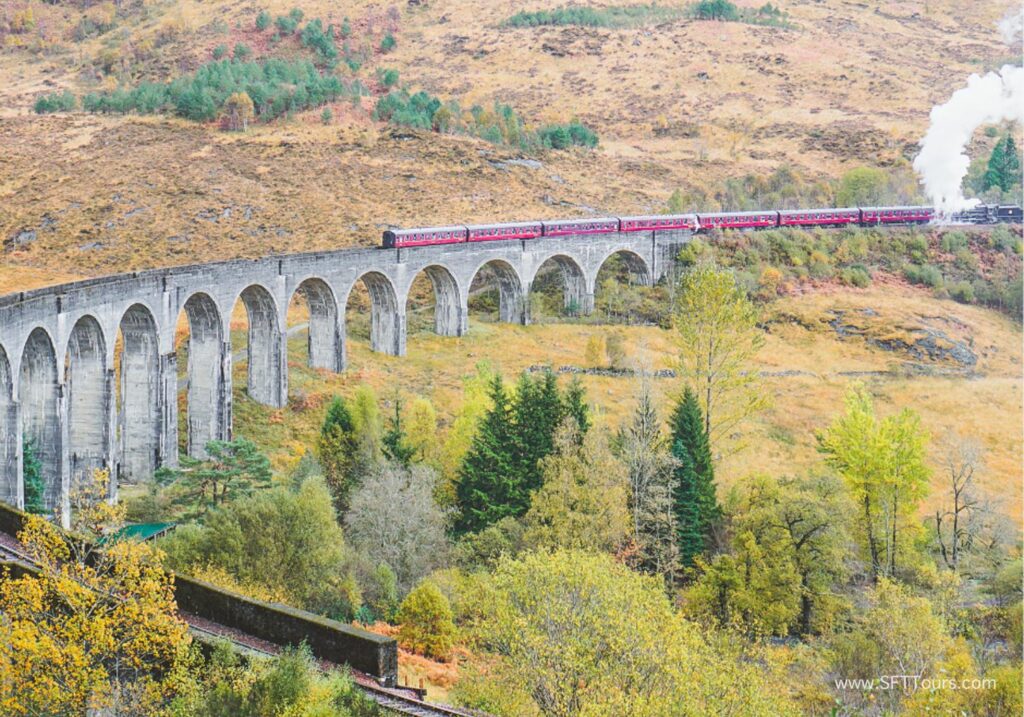
To get around Scotland, you can fly, drive or take local buses and trains.
By air: Domestic flights offer convenient connections between major cities and regions, especially the farther away islands. Some of the major airlines operating domestic flights in Scotland include British Airways, EasyJet and Loganair, the Scottish regional airline that connects remote island destinations such as the Outer Hebrides, Orkney, and Shetland.
By train: To travel around Scotland by train, you can rely on various operators such as ScotRail and LNER (London North Eastern Railway) for journeys between major cities like Glasgow, Edinburgh, Aberdeen, and Inverness, as well as scenic routes through the Scottish countryside.
ScotRail operates routes that extend into the Highlands, providing connections from cities like Glasgow and Edinburgh to destinations such as Inverness, Fort William, and Aviemore. These routes offer travelers the opportunity to explore the stunning landscapes and remote areas of the Scottish Highlands by train.
By car: The best way to get around in Scotland is by car. Renting is relatively straightforward and it is the best way to explore the country. Book in advance to ensure there is availability as options from main airports like Edinburgh and Glasgow get sold out.
Beware that driving is on the left and that manual cars are common. If you can’t drive a stick shift car, make sure to book an automatic.
When driving in the Highlands, where many roads are single lane, you’ll find small openings by the side of the road so you or the oncoming car can get in and let the other driver pass.
Pro tip: Allow more time than what Google estimates. The roads are windy and narrow and you will likely drive slowly and take longer than what Google Maps predicted. Also, avoid electric cars. Members of our community have reported they were given electric cars and were unable to find charging stations in the Highlands and this ruined their entire trip.
By ferry: To access the islands, you will need to take ferries. Caledonian MacBrayne (CalMac) operates services to the Isle of Skye, the Outer Hebrides, and Orkney. You can easily bring your car onboard these ferries so you can continue exploring the islands with your own vehicle.
Pro tip: Book ferry tickets in advance, especially for the Isle of Skye where they sell out often and have a back up plan in case the ferry gets canceled because of the tides and weather – something that happens more often than you think.
By bus: Scotland by bus is a popular and easy option provided by companies like Stagecoach, Citylink, and Megabus, offering extensive routes connecting major cities, towns, and rural areas across the country.
How many days to spend in Scotland
Despite its compact size, Scotland’s expansive landscapes and winding roads mean you need longer than you would expect to get around.
If you’re exploring just Edinburgh or Glasgow, you can easily spend 5-6 days diving into the main attractions, with extra time for day trips to nearby gems like the whisky regions, the lakes or Stirling Castle.
A week-long trip will give you 8-9 days to start off in Edinburgh and spend some time in the Highlands, especially in the Isle of Skye.
With a two-week timeframe and your own wheels, you have much more freedom to explore Scotland’s diverse terrain and see most of its highlights.
Top places to see and things to do in Scotland as a solo female traveler
In this section, you will find our favorite places to visit and things to do in Scotland if you are traveling solo!
Edinburgh
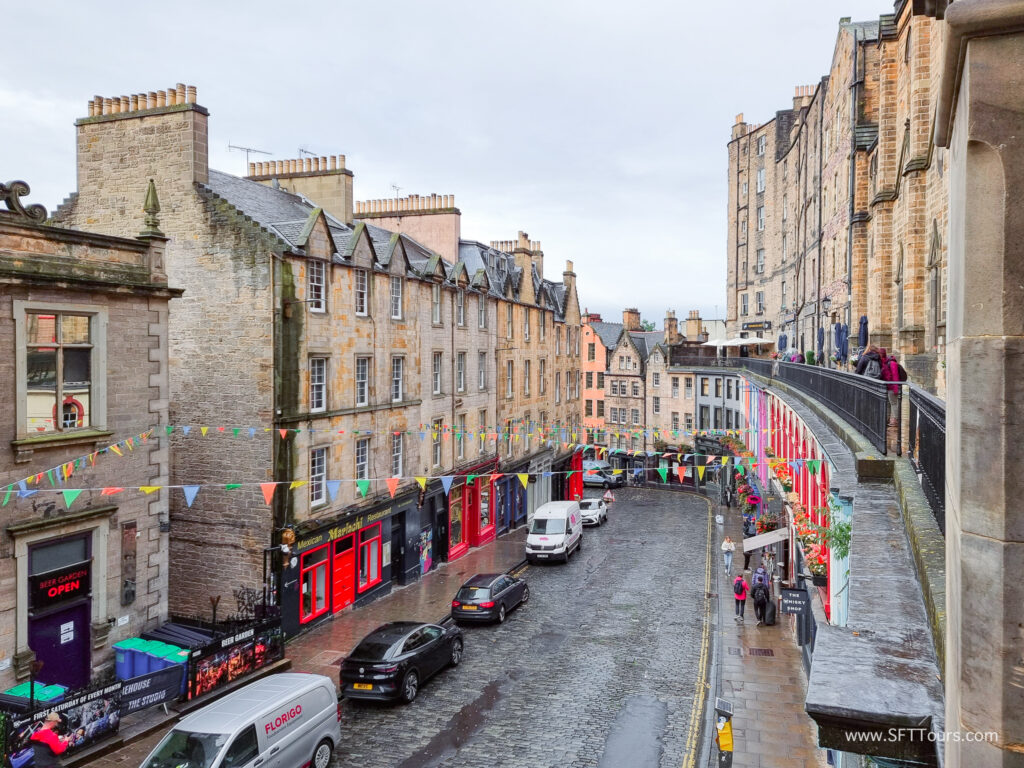
Scotland’s capital city is renowned for its rich history, stunning architecture, and cultural attractions.
Highlights include Edinburgh Castle, located on top of a hill and preserved as one of the best historical buildings in Europe.
The Royal Mile, starting at the Palace of Holyroodhouse and leading to the castle, is a bustling shopping area steeped in history.
Isle of Skye
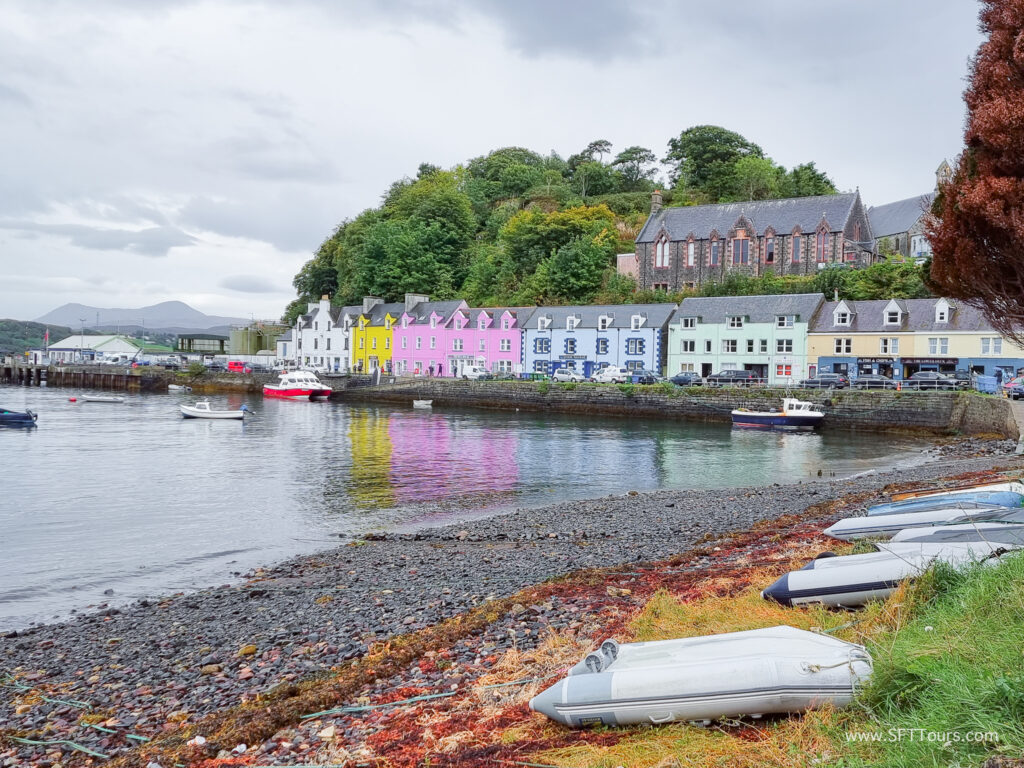
Known for its dramatic landscapes, the Isle of Skye is a paradise for nature lovers. Explore the rugged coastline, iconic rock formations like the Old Man of Storr (which you can hike up to), and picturesque villages like Portree, with its colorful houses and pretty harbor.
Take a loop drive in the northeastern part of the island starting at Portree and heading towards the Old Man of Storr. Continue north to the Lealt Falls, Kilt Rock, the crazy twisty road in the Quiraing and its incredible views, and end at The Fairy Glen.
Loch Ness
Famous for its mythical monster, Loch Ness is also one of Scotland’s most scenic lochs (lakes). Take a boat tour to search for Nessie, visit Urquhart Castle, and enjoy the breathtaking Highland scenery.
Glasgow
Scotland’s largest city offers a dynamic mix of culture, history, and modernity with a hint of charm!
As a solo female traveler in Glasgow, you can enjoy exploring the city’s vibrant cultural scene, from visiting world-class museums like the Kelvingrove Art Gallery to wandering through trendy neighborhoods like the West End or enjoying live music in iconic venues like King Tut’s Wah Wah Hut.
Stirling

This historic city is home to Stirling Castle, one of Scotland’s most important historic sites due to its strategic location, being a key defensive stronghold, royal residence, and witness to many pivotal events in Scottish history such as battles for independence.
Explore the castle’s grand halls and stunning views, and visit the nearby Wallace Monument to learn about Scottish hero William Wallace.
Highlands
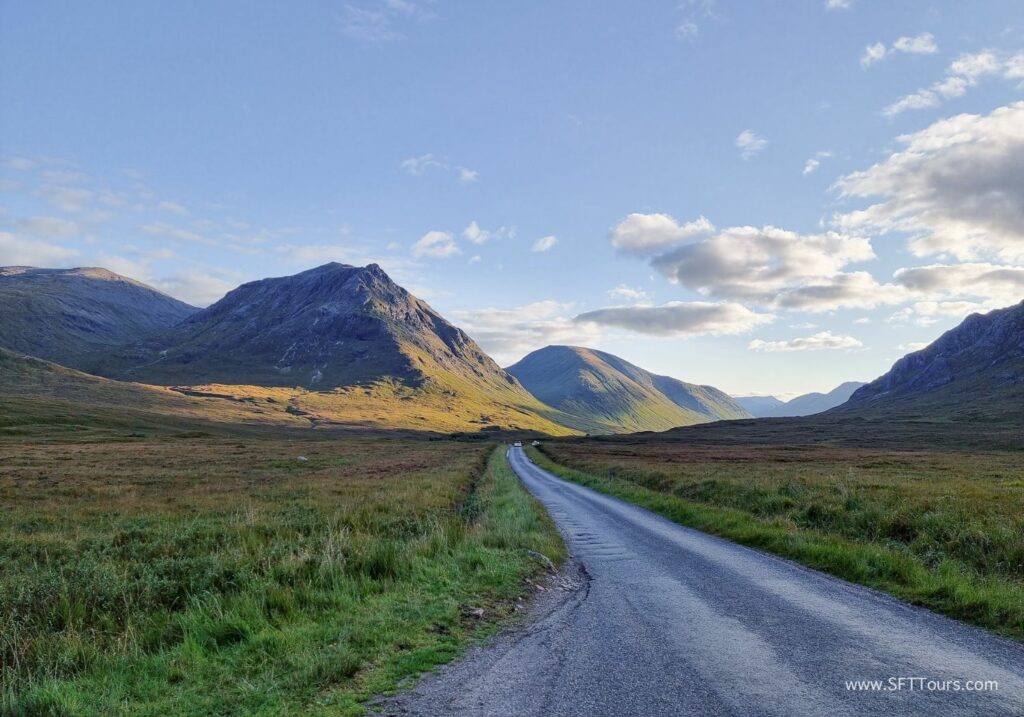
The Scottish Highlands are renowned for their rugged beauty and outdoor adventures. Explore the Cairngorms National Park for hiking and wildlife spotting, drive the scenic North Coast 500 route, and visit charming Highland towns like Inverness and Fort William.
Orkney Islands
Rich in Neolithic history and stunning scenery, the Orkney Islands are a hidden gem off Scotland’s northern coast. Explore ancient sites like Skara Brae and the Ring of Brodgar, and enjoy the peaceful island atmosphere.
The Trossachs
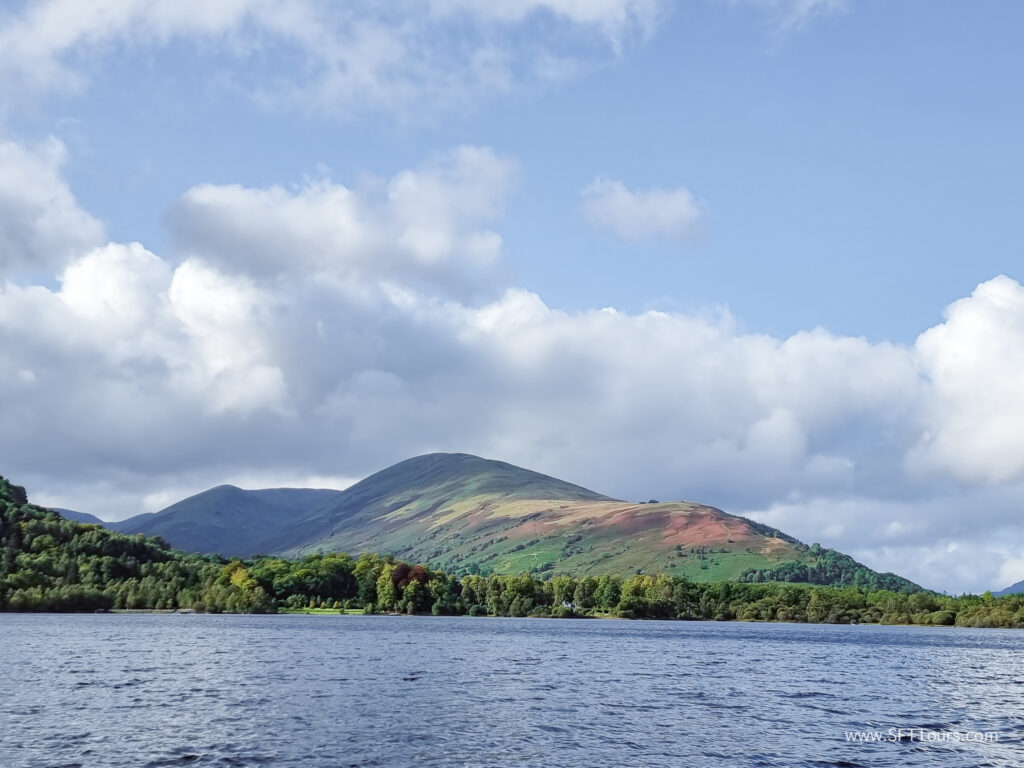
This picturesque region is often referred to as the “Highlands in miniature.” Explore Loch Lomond and the Trossachs National Park for hiking, boating, and scenic drives through rolling hills and sparkling lochs.
The town of Luss is a great stop to jump on boat trips and enjoy a stroll in one of the prettiest and most picturesque villages.
Aberdeen
Known as the “Granite City” for its stunning gray stone buildings, Aberdeen offers a blend of historic charm and modern amenities. Visit the Aberdeen Maritime Museum, stroll along the beachfront, and explore nearby castles like Dunnottar Castle.
Outer Hebrides
This remote island chain offers unspoiled beaches, rugged coastline, and rich Gaelic culture. Explore the stunning beaches of Harris and Lewis, visit ancient sites like the Callanish Standing Stones, and experience traditional music and hospitality in local villages.
Travel essentials for Scotland
In this section we will look at a range of other things to consider when traveling to Scotland as a solo female traveler.

Staying connected: Public free WiFi hotspots are easy to find but if you want to be connected all the time, explore roaming options with your home mobile provider, get a local SIM card at the airport or in town or buy an eSIM like AloSIM or Holafly (unlimited internet).
Make sure your phone is unlocked so that a foreign SIM card or eSIM will work, and get the store staff to help you set up the new SIM card before leaving the shop so they can help you with any settings that need changing.

UK Plugs: The UK uses a “Type G” plug with three rectangular prongs in a triangular pattern and is designed to fit into British electrical outlets. The Type G plug is also used in other countries such as Ireland, Malta, Malaysia, Singapore, and parts of Africa and the Middle East.
Dual voltage: If you come from the US or Canada, many small and older appliances that you may use back home may not work in Scotland (or other European countries). This is because the voltage is not the same. If you have an old appliance, consider leaving it home, most hotels have hair dryers.
Wear the right shoes: Scotland’s weather can be quite unpredictable, with frequent rain and damp conditions. Good shoes, particularly waterproof ones, are necessary to keep your feet dry and comfortable, especially if you plan to spend a lot of time outdoors. We like these Columbia’s cute waterproof sneakers and these highly rated hiking boots (that also come in wide sizes) to get you through the Highlands.
If you are looking for something a bit trendier, Sorel makes fun and stylish sneakers like this pair especially designed for exploring wet cities. They may have thought of Scotland and its rugged terrain, including mountains, moorlands, and rocky coastlines when coming up with these ones!
Money and currency

Currency: The currency used in Scotland is the British Pound Sterling (£), often abbreviated as GBP. Scotland has its own banknotes, which are legal currency throughout the United Kingdom alongside Bank of England notes. Scottish banknotes come in denominations of £5, £10, £20, and £50.
Currency exchange services are available at airports, banks, exchange bureaus, and some hotels. However, be aware that these services often charge fees or offer less favorable exchange rates, so it’s wise to compare rates and fees before exchanging money.
You will not need a lot of cash during your trip as almost all businesses take credit cards. Keep some cash for tipping.
Tipping: Tipping practices in Scotland are similar to those in the rest of the UK. While tipping is not obligatory, it is appreciated for good service in restaurants, bars, taxis, and other service industries, though tipping in bars and pubs is less common than in restaurants.
A typical tip is around 10-15% of the total bill, but this can vary depending on the level of service and personal preference. You may not be able to charge a tip on your credit card and will need cash to do so.
ATMs: ATMs are widely available throughout Scotland, especially in urban areas and tourist destinations. Most ATMs accept major international credit and debit cards, but it’s a good idea to inform your bank of your travel plans beforehand to avoid any issues with card usage abroad.
Keep in mind that some ATMs may charge a fee for withdrawals, and it’s a good idea to withdraw larger amounts less frequently to minimize fees.
Pro tip: Avoid ATM machines that are standalone and not attached to a bank. These often charge exorbitant fees as they are an exclusive ATM business, and if your card gets taken, it is much harder to retrieve it than from a bank.
Credit cards: Major credit cards such as Visa and Mastercard are widely accepted in Scotland, especially in larger cities and tourist areas. Contactless payment methods, such as Apple Pay and Google Pay, are becoming increasingly popular.
Local culture and customs
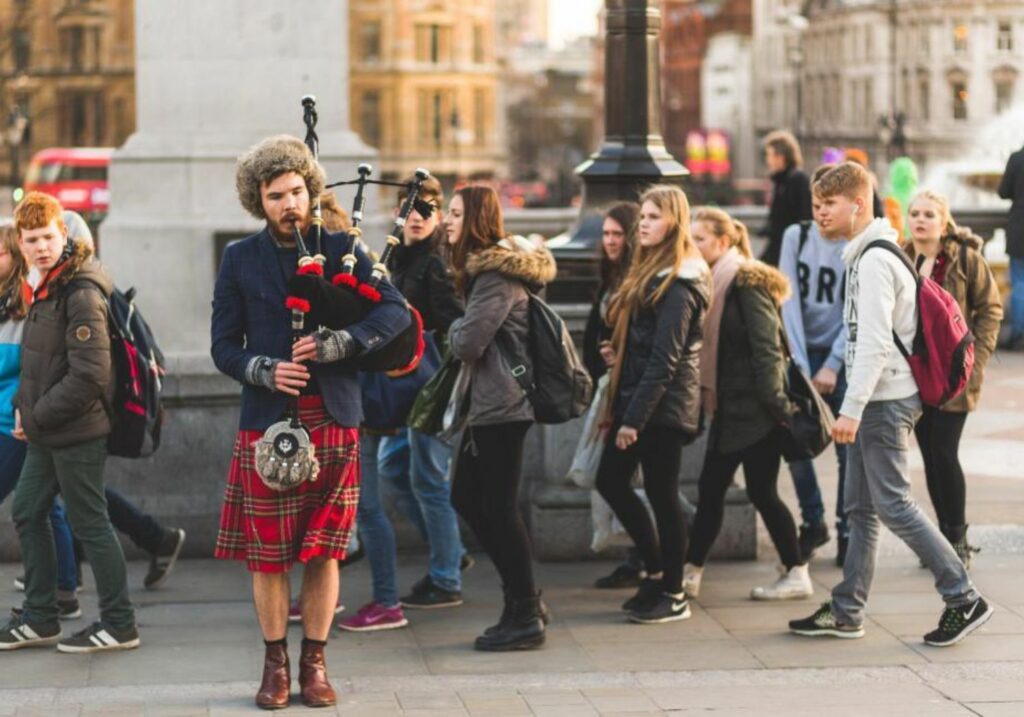
It is always important to learn more about the culture and customs of a place you visit, not only so that you don’t offend the locals but also so that you can learn more about it and gain the perspective that travel is most valuable for.
Respect local customs: Be mindful of Scottish customs and traditions, such as the significance of tartan patterns (distinctive Scottish designs representing clans, families, regions, or institutions), the respect for Scottish symbols like the Saltire (Scottish flag), and the importance of events like Hogmanay (New Year’s Eve) and Burns Night (celebrating the poet Robert Burns).
Appreciate regional differences: Scotland is culturally diverse, with different regions having their own distinct identities, customs, and differences with the rest of the UK.
Recognize and appreciate these regional differences, whether it’s in language (such as Scots Gaelic), cuisine, or traditions, and understand that Scotland’s efforts to remain independent and perhaps separate from the UK are very real.
Enjoy the banter: Scots have a fondness for banter and playful teasing as a form of communication. Embrace this aspect of Scottish culture but be mindful of boundaries and tone. Good-natured humor is usually well-received, but it’s important to avoid crossing any lines.
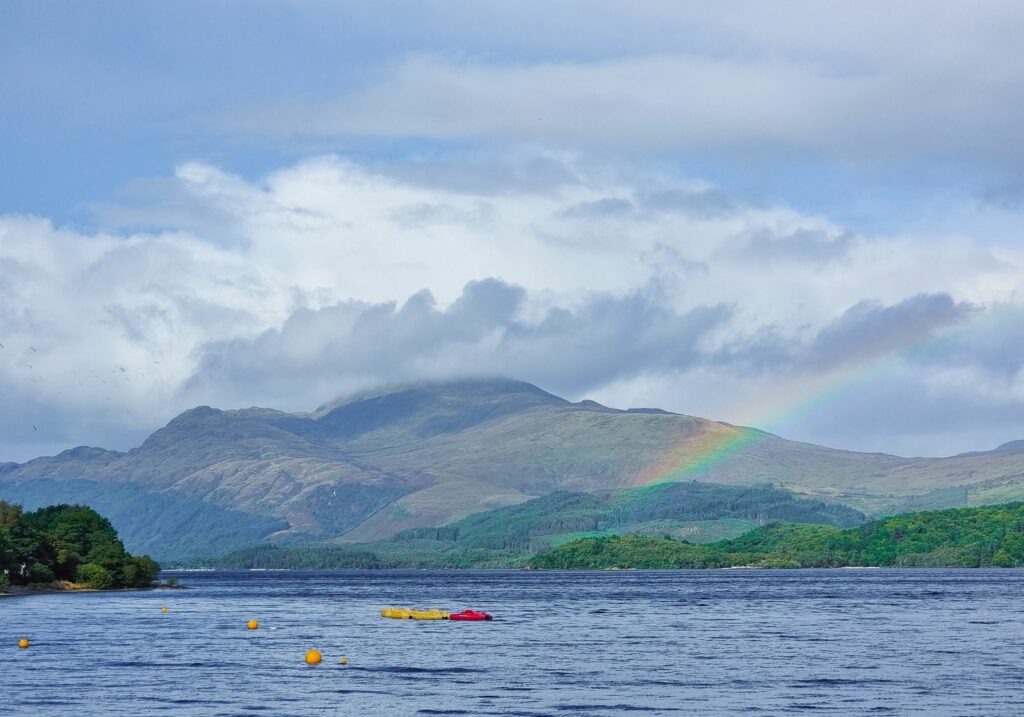
Respect Nature and the environment: Scotland’s stunning landscapes and natural beauty is cherished by locals. Show respect for the environment by following designated trails, avoiding littering, and adhering to conservation guidelines. Scots take pride in their country’s natural heritage and appreciate visitors who share this respect.
Basic Scottish Gaelic words
In Scotland, the primary and official language spoken is English. However, there are also minority languages spoken in certain regions, particularly Scottish Gaelic and Scots, a Germanic language closely related to English and is spoken by some people, particularly in the Lowlands of Scotland. Here’s a few basic Scottish Gaelic words for you to practice:
- Madainn Mhath (mah-dainn vah) – Good morning
- Feasgar Math (fes-kar mah) – Good afternoon/evening
- Oidhche Mhath (oy-chuh vah) – Good night/evening
- Tapadh leat (tah-puh let) – Thank you (informal)
- Tapadh leibh (tah-puh layv) – Thank you (formal/plural)
- Slàinte (slahn-cheh) – Cheers/Good health
- Failte (fal-chuh) – Welcome
- Dia dhuit (dee-uh ghoo-eet) – Hello (lit. “God be with you”)
- Càite bheil…? (kah-chuh vail) – Where is…?
- Ciamar a tha thu? (kee-uh-mahr uh ha oo) – How are you?
- Tha gu math, tapadh leibh. (hah goo mah, tah-puh layv) – I am well, thank you.
- Is mise… (is meesh-uh) – My name is…
Local cuisine
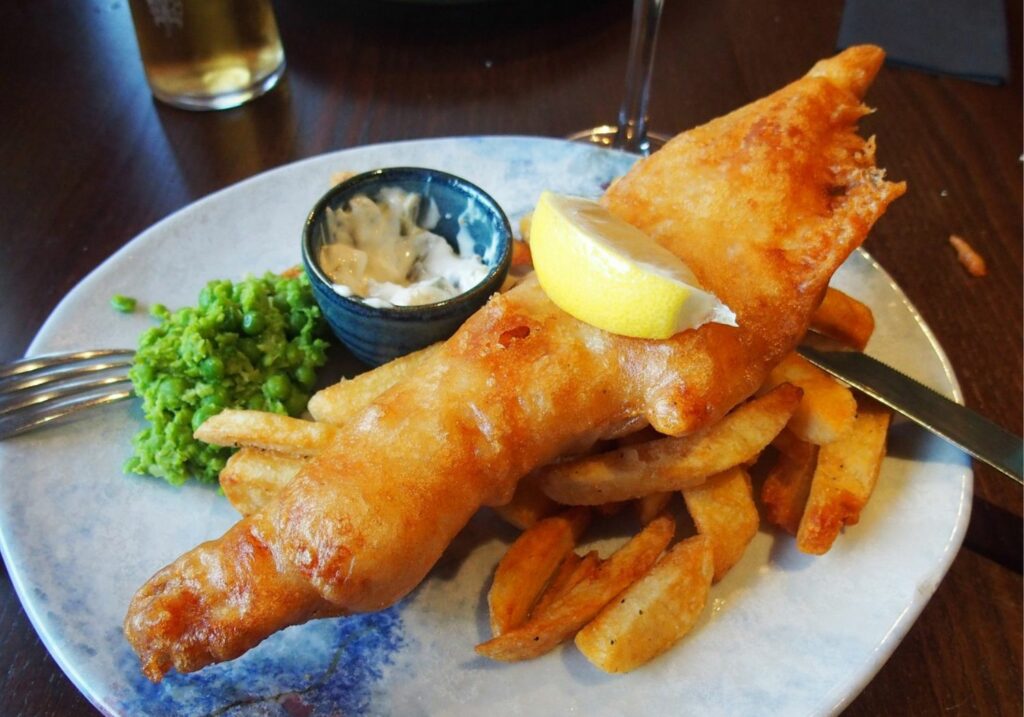
Scotland is gaining recognition for its diverse and flavorful cuisine, which often highlights fresh, local ingredients and traditional recipes and it is experiencing a revival in recent years.
Eating in Scotland – What to expect
Scotland boasts remarkable farms, and Scots take pride in sourcing their ingredients locally, ranging from fresh seafood and tender meats to rich dairy products and root vegetables.
From hearty dishes like haggis with neeps and tatties, to seafood delicacies like smoked salmon, and traditional desserts like cranachan and shortbread, Scotland offers a wide range of delicious “scran” for food enthusiasts to explore and enjoy.
Because of the short hours of daylight, meals in Scotland are taken early. Lunch is taken between 11,30am and 12,30pm, and dinner is commonly enjoyed between 5pm and 6pm. Restaurants will stay open until later and 7pm dinner is fine if you are looking to make the most of your day out.
Best Scottish foods to try
On any Scottish menu you will find dishes that are unheard of elsewhere. Below is a list of must-try meals on your trip to Scotland:
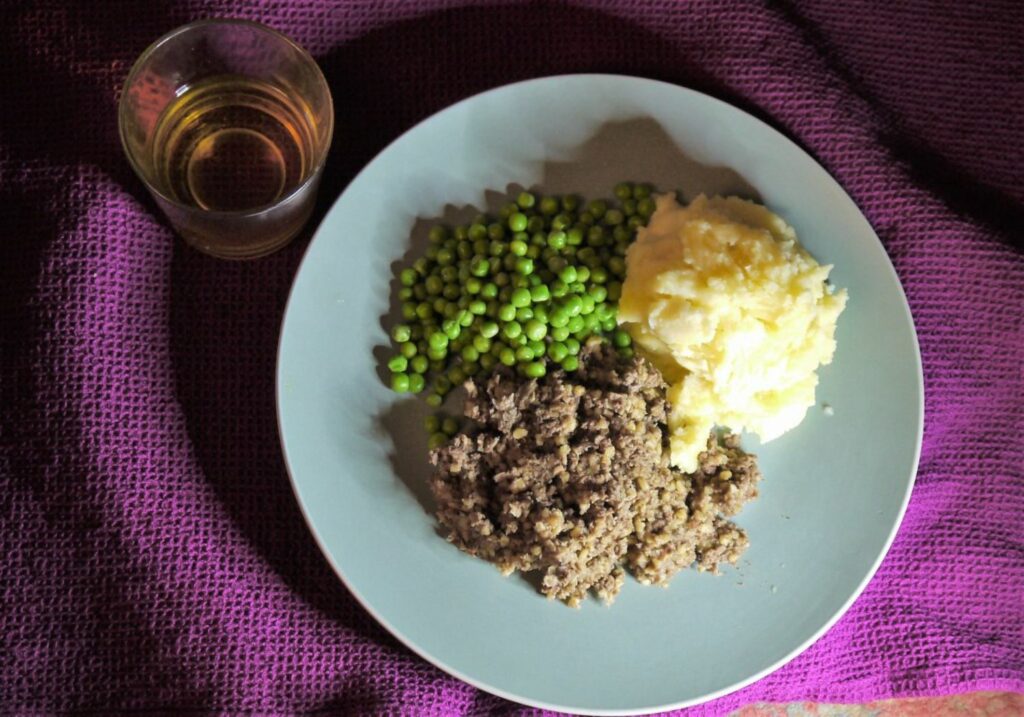
Haggis: A traditional Scottish dish made from minced sheep’s offal (heart, liver, and lungs), mixed with oatmeal, suet, onions, and spices traditionally encased in the sheep’s stomach and then boiled or baked. It’s typically served with neeps and tatties (turnips and mashed potatoes) and enjoyed as a main course, especially during Burns Night celebrations.
Aberdeen Angus Beef: Renowned for its quality and flavor, Aberdeen Angus beef is a breed of cattle native to Scotland. It’s known for its tender meat and is used in various dishes such as steaks, burgers, and stews.
Scotch Broth: A traditional soup made with barley, root vegetables (such as carrots, leeks, and celery), and often lamb or beef. It’s a nutritious and hearty dish, simmered to perfection for a comforting meal.
Scotch Pie: A handheld savory pie filled with minced meat (usually beef or mutton) and encased in a hot-water crust pastry. It’s a popular snack or quick meal found in bakeries and takeaway shops across Scotland.
Cullen Skink: A hearty soup originating from the town of Cullen in Moray, made with smoked haddock, potatoes, onions, and cream. It has a rich and comforting flavor, perfect for warming up on cold days.
Cock-a-Leekie Soup: A classic soup made with chicken, leeks, onions, and sometimes prunes, simmered together to create a flavorful broth. It’s a comforting dish often enjoyed during colder months.
Stovies: A traditional dish made with leftover roast beef, potatoes, onions, and sometimes other vegetables, all cooked together until tender and flavorful. It’s a simple yet hearty meal, often served with oatcakes or crusty bread.
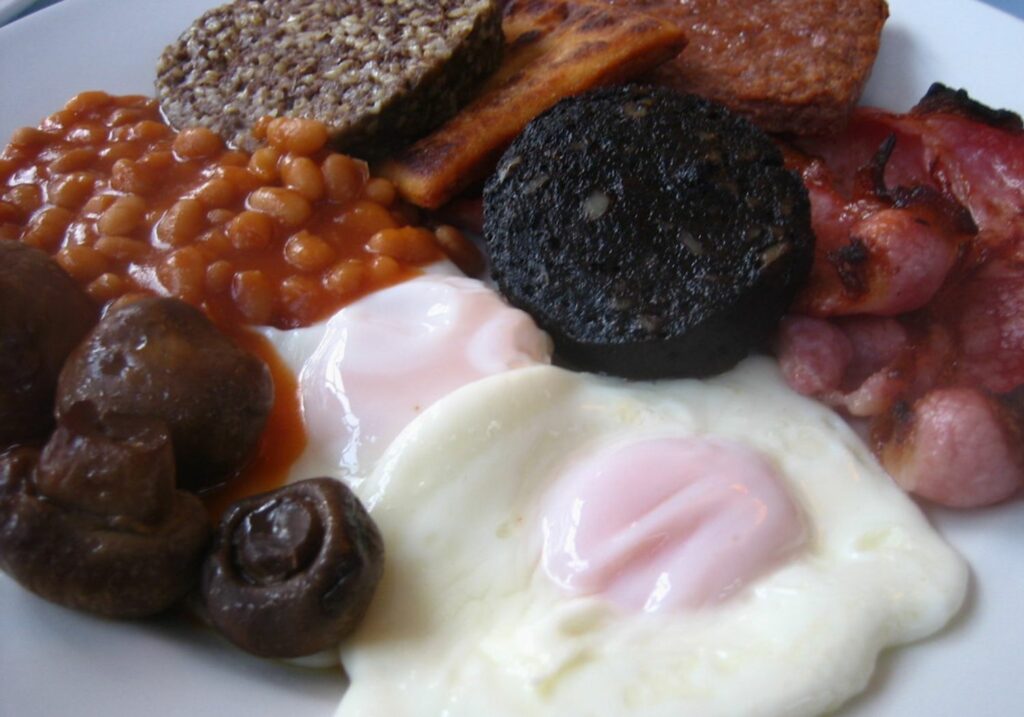
Black Pudding: A type of blood sausage made from pork blood, fat, and oatmeal, seasoned with spices. It’s typically sliced and fried until crispy on the outside and enjoyed as part of a traditional Scottish breakfast or served alongside other savory dishes.
Cockenzie and Port Seton Fish Supper: Deep-fried fish (usually haddock or cod) served with chips (fries) and often accompanied by mushy peas or tartar sauce. It’s a popular takeaway meal enjoyed throughout Scotland. It’s similar to fish and chips.
Forfar Bridie: A savory pastry originating from the town of Forfar in Angus, filled with minced beef, onions, and sometimes spices, all encased in a flaky pastry crust. It’s a delicious handheld snack or light meal enjoyed hot or cold.
Best Scottish Desserts to try
Some of the unique Scottish sweets are to die for, and you have to try these ones on your Scottish getaway:
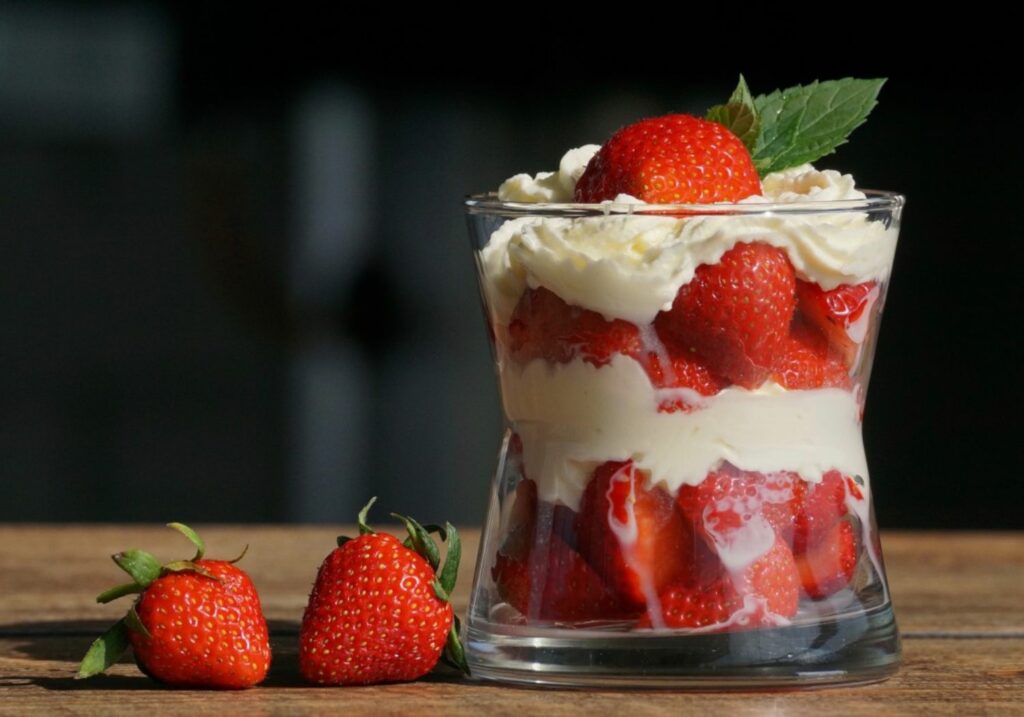
Cranachan: Dessert made with whipped cream, toasted oats, honey, whisky, and fresh raspberries, layered together to create a deliciously indulgent treat.
Shortbread: A classic biscuit made with butter, sugar, and flour, resulting in a rich, crumbly texture and buttery flavor. It’s often enjoyed with a cup of tea or coffee.
Dundee Cake: A traditional fruitcake made with almonds, currants, sultanas, and often candied peel, all mixed into a rich, moist cake batter. It’s typically topped with almonds and enjoyed with a cup of tea.
Tipsy Laird: A trifle-like dessert made with layers of sponge cake soaked in whisky or sherry, custard, whipped cream, and sometimes fruit preserves or berries.
Clootie Dumpling: A traditional pudding made with dried fruit, suet, flour, breadcrumbs, and spices, all wrapped in a cloth (or “cloot”) and boiled. It has a dense, moist texture and is often served with custard or a drizzle of whisky sauce.
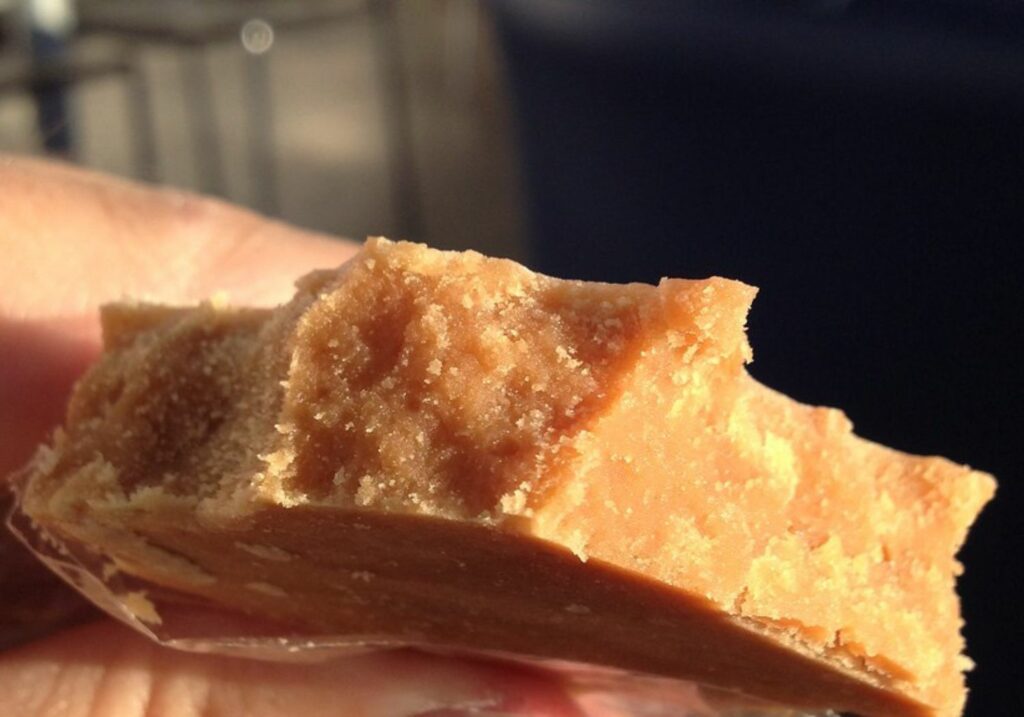
Tablet: A sweet confection similar to fudge, made with sugar, condensed milk, butter, and sometimes vanilla or whisky. It has a crumbly texture and a rich, buttery flavor. It can also be in the form of ice cream with vanilla ice cream blended into it.
Ecclefechan Tart: A traditional Scottish tart made with a rich filling of dried fruits (such as currants and sultanas), nuts, butter, sugar, and sometimes whisky or rum, all baked in a pastry crust.
Selkirk Bannock: A traditional Scottish fruit bread originating from the town of Selkirk, made with flour, sugar, butter, dried fruit (such as currants and sultanas), and spices. It has a dense, moist texture and is often enjoyed sliced and spread with butter.
Best Scottish drinks to try
Scotland is famous for its whisky but there are other drinks that are popular:
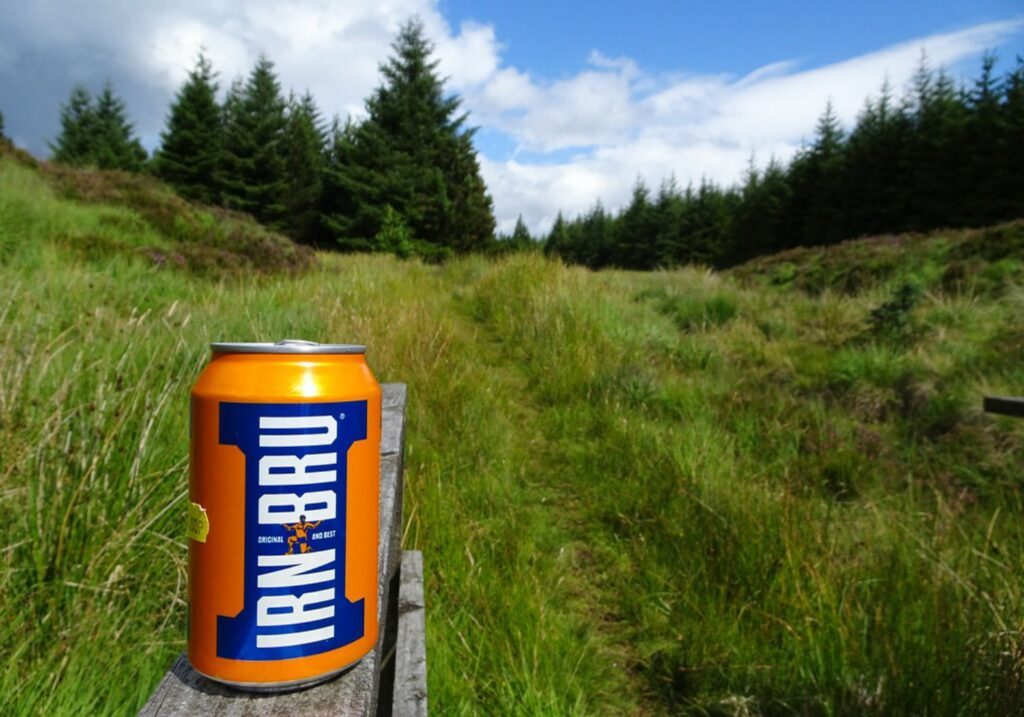
Irn-Bru: Often dubbed “Scotland’s other national drink” alongside whisky, Irn-Bru is a carbonated soft drink known for its vibrant orange color and unique flavor, described as a mix of citrus and bubblegum. It’s a beloved Scottish beverage with a cult following.
Scottish Gin: Scottish gin has experienced a surge in popularity in recent years, with many distilleries producing high-quality, artisanal gins infused with local botanicals. Look out for brands like Hendrick’s Gin, The Botanist, and Edinburgh Gin, which offer unique and flavorful expressions.
Scottish Beer: Scotland has a long tradition of brewing beer, with Scottish ales being particularly popular. These ales range in style from light and refreshing to rich and malty, with Scotch Ale, Wee Heavy, or Scottish Export Ale being notable brews.
Scotland’s craft beer scene has also been growing rapidly, with many breweries producing innovative and flavorful beers. Whether you prefer hoppy IPAs, rich stouts, or refreshing lagers, you’ll find a wide selection of craft beers to enjoy in Scotland.
Cider: While perhaps not as well-known as other Scottish beverages, Scottish cider is made from locally sourced apples and often featuring unique flavor profiles, Scottish cider offers a refreshing alternative to other drinks.
Scottish Liqueurs: Scotland produces a variety of liqueurs infused with local ingredients and flavors. Some popular options include Drambuie, a whisky-based liqueur flavored with honey and herbs, and Glayva, a sweet and spicy liqueur made with Scotch whisky, honey, and spices.
Scottish whisky
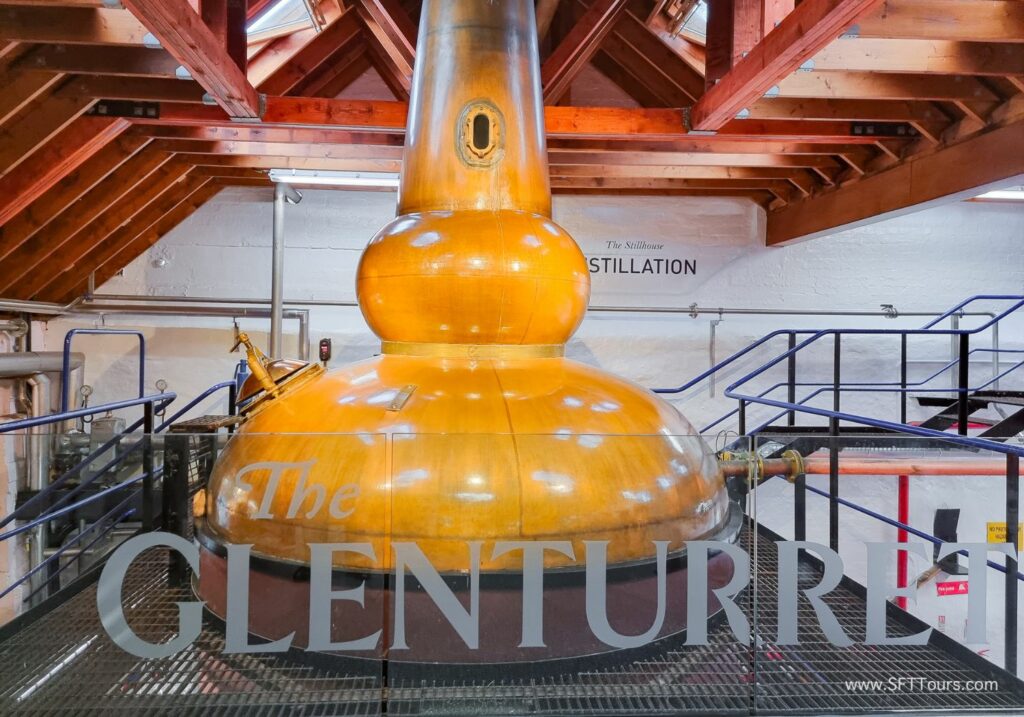
Scottish whisky (spelled without the “e” due to historical Scottish Gaelic influence) has a rich history dating back to medieval monks who distilled spirits for medicinal use. By the late 15th century, whisky production expanded across Scotland, initially on a small scale by farmers and landowners.
The “Whisky Wars” of the 18th century saw illicit distillation and smuggling, but the 19th century brought industrialization and innovation, solidifying Scottish whisky’s reputation for quality and craftsmanship on a global scale.
Its global popularity stems from its high quality, diverse flavors, and rich heritage with brands like Glenfiddich and Laphroaig showcasing this diversity, offering distinct flavor profiles that reflect their respective regions. Scotland’s whisky regions, including Speyside, Islay, and the Highlands, yield whiskies ranging from smooth and fruity to smoky and peaty.
This combination of prestige, tradition, and flavor diversity has made Scottish whisky a beloved cultural icon worldwide.
Come join us on our private tour of Glenturret Distillery, the oldest working distillery in Scotland, followed by a tasting in the beautiful tasting room, obviously!
Notable women in Scotland’s history
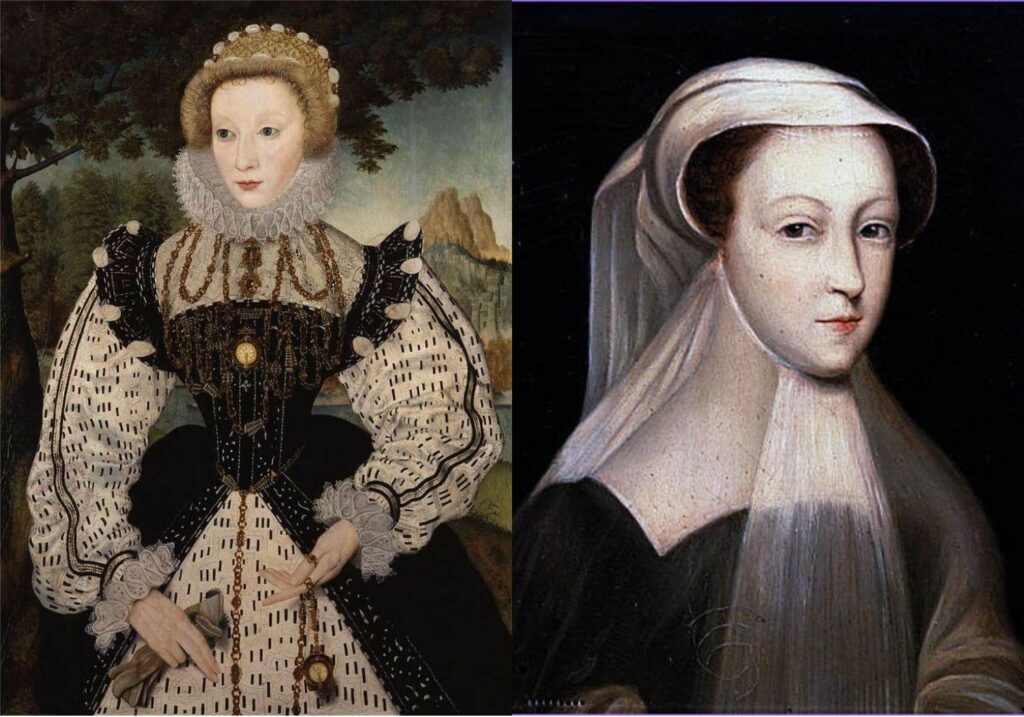
Scotland has seen hundreds of influential and inspiring women throughout its history that have contributed to making Scotland the country it is today. Here’s a few notable examples:
- Mary, Queen of Scots (1542-1587): A towering figure in Scottish history, Mary Stuart ruled Scotland from infancy and later became Queen of France through marriage. Despite her tumultuous reign and eventual imprisonment and execution by her cousin, Queen Elizabeth I of England, Mary remains an enduring symbol of Scottish royalty and intrigue.
- Flora MacDonald (1722 to 1790): Famous for her role in aiding Bonnie Prince Charlie’s escape following the Jacobite defeat at the Battle of Culloden, Flora MacDonald’s bravery and loyalty have become legendary. Her daring rescue of the prince, disguised as her maid, earned her admiration and respect both in Scotland and abroad.
- Eliza Wigham (1820 to 1899): A pioneering advocate for women’s rights and social reform, Eliza Wigham was instrumental in the campaign for women’s suffrage in Scotland during the 19th century. She co-founded the Edinburgh National Society for Women’s Suffrage and tirelessly campaigned for equal rights and opportunities for women.
- Màiri Mhòr nan Òran (Mary MacPherson) (1821 to 1898): A Gaelic poet and cultural activist, Màiri Mhòr nan Òran played a crucial role in preserving and promoting Scotland’s Gaelic heritage. Her poignant poems captured the essence of Highland life and the struggles faced by its people during a time of social and economic upheaval.
- Mary Somerville (1780 to 1872): A pioneering mathematician, astronomer, and science writer, Mary Somerville defied societal expectations of her time to become one of the leading intellectuals of the 19th century. Her works, including “The Mechanism of the Heavens” and “On the Connexion of the Physical Sciences,” helped popularize scientific knowledge and earned her international acclaim.
- Maggie Keswick Jencks (1941 to 1995): A visionary philanthropist and co-founder of Maggie’s Centres, Maggie Keswick Jencks revolutionized cancer care by creating welcoming spaces where patients and their families could find emotional support, practical advice, and a sense of community. Her legacy lives on in the numerous Maggie’s Centres established across the UK and beyond.
These remarkable women, among many others, have left an incredible mark on Scotland’s history and continue to inspire generations with their courage, intellect, and compassion.
Scottish media and literature
Scotland is the perfect dreamy backdrop for any good story, and has been featured in popular books, tv shows and movies.
Popular books about or based in Scotland
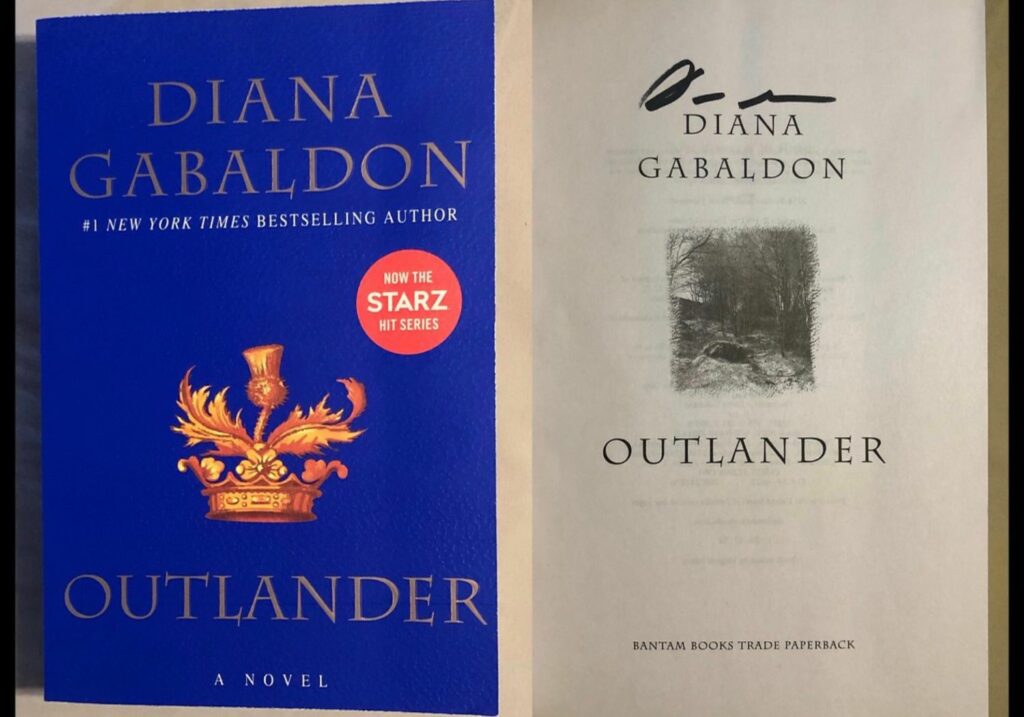
- “Outlander” by Diana Gabaldon: A historical fiction series following the adventures of Claire Randall, a World War II nurse who finds herself transported back in time to 18th-century Scotland.
- “Trainspotting” by Irvine Welsh: A gritty novel set in Edinburgh that follows a group of heroin addicts navigating life in the city’s underworld.
- “The Prime of Miss Jean Brodie” by Muriel Spark: Set in Edinburgh, this novel tells the story of an eccentric schoolteacher and her influence on her students at a girls’ school in the 1930s.
- “Kidnapped” by Robert Louis Stevenson: A classic adventure novel set in 18th-century Scotland, following the journey of young David Balfour as he is kidnapped and embarks on a quest for justice.
- “The 39 Steps” by John Buchan: A suspenseful thriller set in Scotland and London, following the adventures of Richard Hannay as he becomes embroiled in a conspiracy to undermine the British government.
- “The Lewis Trilogy” by Peter May: A series of crime novels set in the Outer Hebrides, following detective Fin Macleod as he investigates crimes on the remote Scottish islands.
- “Sunset Song” by Lewis Grassic Gibbon: The first book in the “A Scots Quair” trilogy, set in rural Scotland in the early 20th century, depicting the life of a young woman named Chris Guthrie.
- “The Strange Case of Dr. Jekyll and Mr. Hyde” by Robert Louis Stevenson: A classic novella set in Victorian Edinburgh, exploring themes of duality and the human psyche.
- “The Cutting Room” by Louise Welsh: A mystery novel set in contemporary Glasgow, following a gay auctioneer who becomes embroiled in a dark and dangerous world of blackmail and murder.
- “Whisky Galore” by Compton Mackenzie: A comedic novel set on the fictional Scottish island of Great Todday during World War II, where the inhabitants attempt to salvage a shipwreck carrying a cargo of whisky.
Famous movies or tv shows about or set in Scotland
- “Braveheart” (1995): Directed by Mel Gibson, this epic historical drama follows the story of William Wallace, a Scottish warrior who leads a rebellion against the oppressive rule of King Edward I of England.
- “Outlander” (TV Series, 2014-present): Based on the book series by Diana Gabaldon, this time-traveling romance drama follows Claire Randall, a World War II nurse who finds herself transported back in time to 18th-century Scotland, where she becomes embroiled in the Jacobite risings and falls in love with Highland warrior Jamie Fraser.
- “Trainspotting” (1996): Directed by Danny Boyle and based on the novel by Irvine Welsh, this darkly comedic drama follows a group of heroin addicts living in Edinburgh as they navigate addiction, friendship, and life in the city’s underworld.
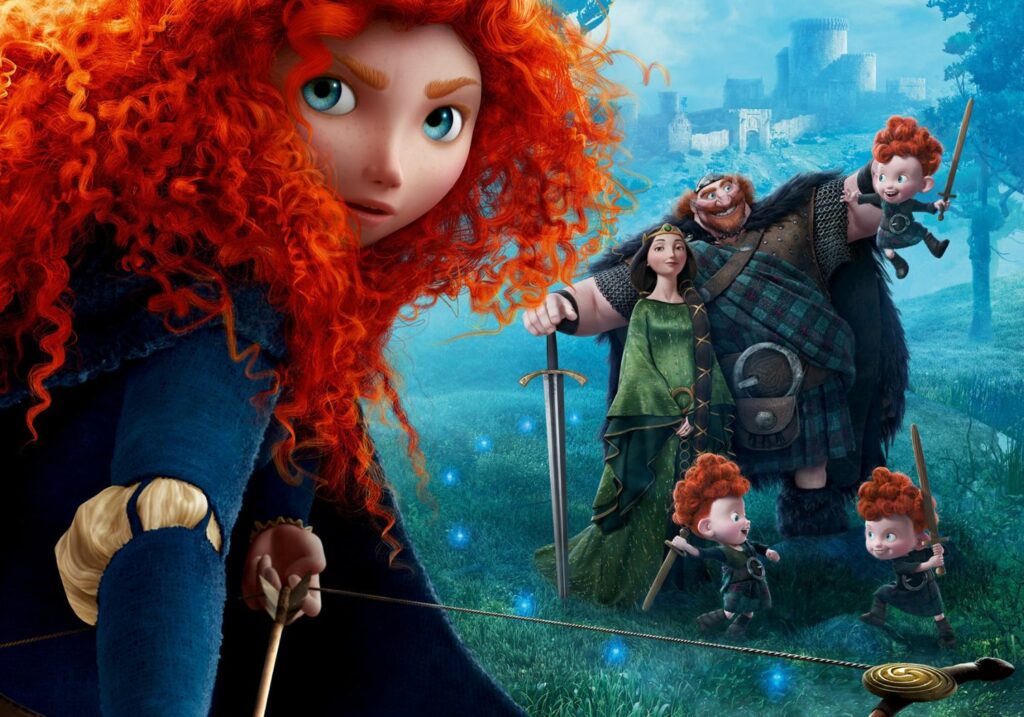
- “Brave” (2012): An animated fantasy film produced by Pixar Animation Studios and set in medieval Scotland, following the adventures of Merida, a skilled archer and princess who defies tradition to forge her own path.
- “The Crown” (TV Series, 2016-present): While not exclusively set in Scotland, this historical drama series explores the reign of Queen Elizabeth II, including her interactions with various members of the British royal family, including her relationship with Prince Philip, who was born in Corfu, Greece, but spent part of his childhood in Scotland.
- “Local Hero” (1983): Directed by Bill Forsyth, this comedy-drama film follows an American oil executive who is sent to a small Scottish village to negotiate the purchase of land for a new refinery, only to find himself enchanted by the village’s quirky residents and way of life.
- “Shetland” (TV Series, 2013-present): Based on the novels by Ann Cleeves, this crime drama series follows Detective Inspector Jimmy Perez as he investigates murders on the remote Scottish Shetland Islands, delving into the tight-knit community’s secrets and mysteries.
- “The Wicker Man” (1973): Directed by Robin Hardy, this cult classic horror film follows a police sergeant who travels to a remote Scottish island to investigate the disappearance of a young girl, only to uncover a sinister pagan cult.
- “Highlander” (1986): Directed by Russell Mulcahy, this fantasy action film follows the story of Connor MacLeod, a Scottish warrior who discovers he is immortal and must battle other immortals throughout history for the ultimate prize.
- “Skyfall” (2012): While not exclusively set in Scotland, this James Bond film features several key scenes set in the Scottish Highlands, including Bond’s ancestral home of Skyfall Lodge, where he confronts his past and battles his adversaries.

